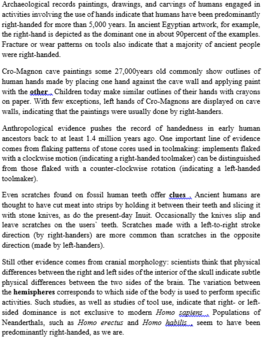Read the following passage and mark the letter A, B, C or D on your answer sheet to indicate the correct answer to each of the questions.
It is difficult to write rules that tell exactly when we should apologize, but it is not difficult to learn how. If we have done something to hurt someone’s feeling or if we have been impolite or rude, we should apologize. An apology indicates that we realize we have made a mistake, and we are sorry for it. It is a way of expressing our regret for something. When we apologize, we admit our wrongdoing, usually offer a reason for it, and express regret.
The simplest way to apologize is to say “I’m sorry”, but often that is not enough. Let’s take a common situation. Mario is late for class and enters the classroom, interrupting the teacher in the middle of the class. What does he do? The most polite action is usually to take a seat as quietly as possible and apologize later. But if the teacher stops and waits for him to say something, he could apologize simply “I’m sorry I’m late”, ask permission to take his seat, and sit down. Naturally, more than this, a reason for the tardiness, is needed, but this is not the time or the place for it because he has already caused one interruption and doesn’t need to make it any longer or worse than it already is.
When we apologize, ________
A. we express our sadness and unluckiness.
B. we realize our wrongdoing.
C. we express our happiness.
D. we admit our wrongdoing, offer a reason for it, and express regret.




Đáp án D
Khi xin lỗi, __________
A. ta bày tỏ nỗi buồn và sự bất hạnh.
B. ta nhận ra điều mình làm sai.
C. ta bày tỏ sự hạnh phúc.
D. ta thừa nhận việc mình làm sai, đưa ra lý do, và bày tỏ sự hối lỗi.
Câu cuối đoạn 1: “When we apologize, we admit our wrongdoing, usually offer a reason for it, and express regret.”